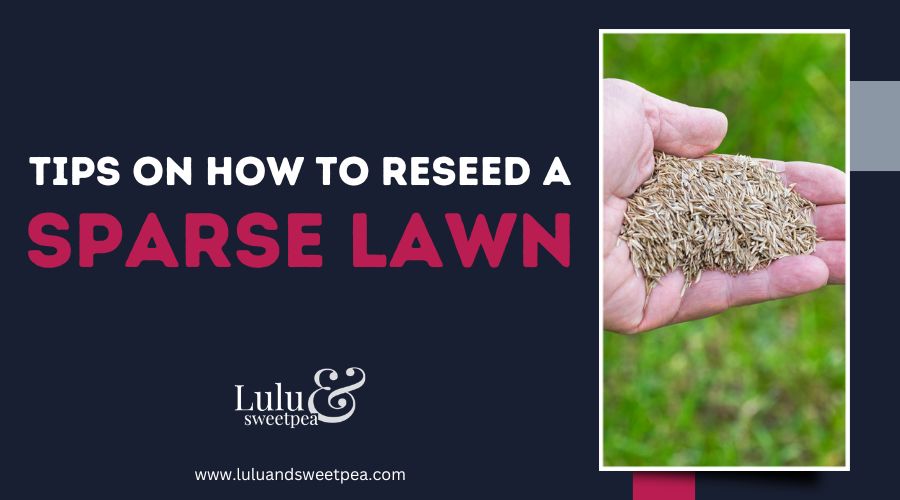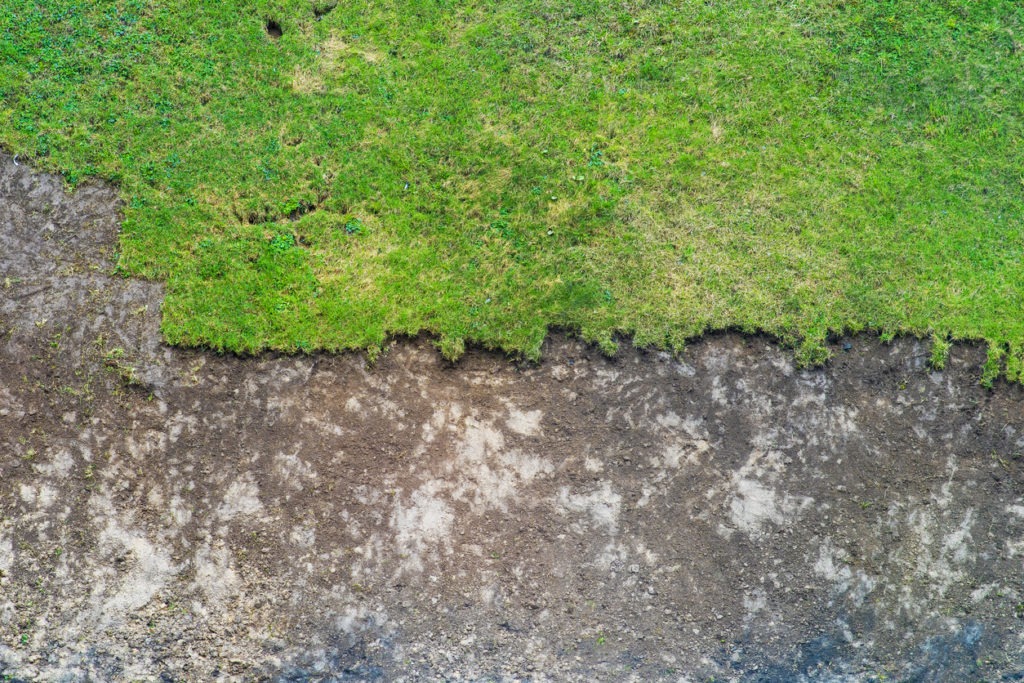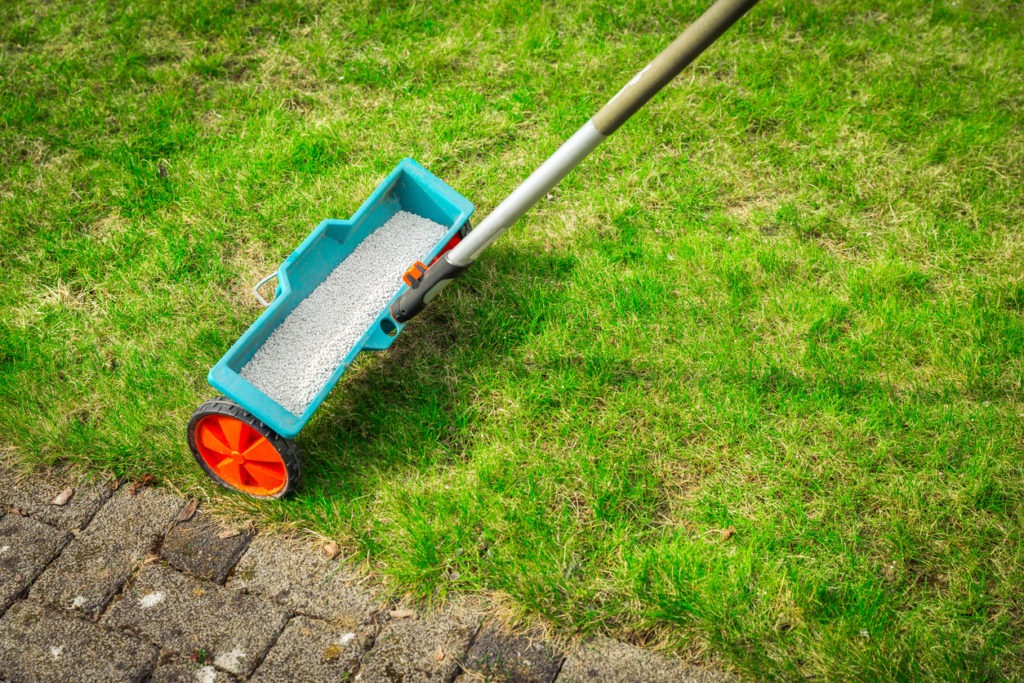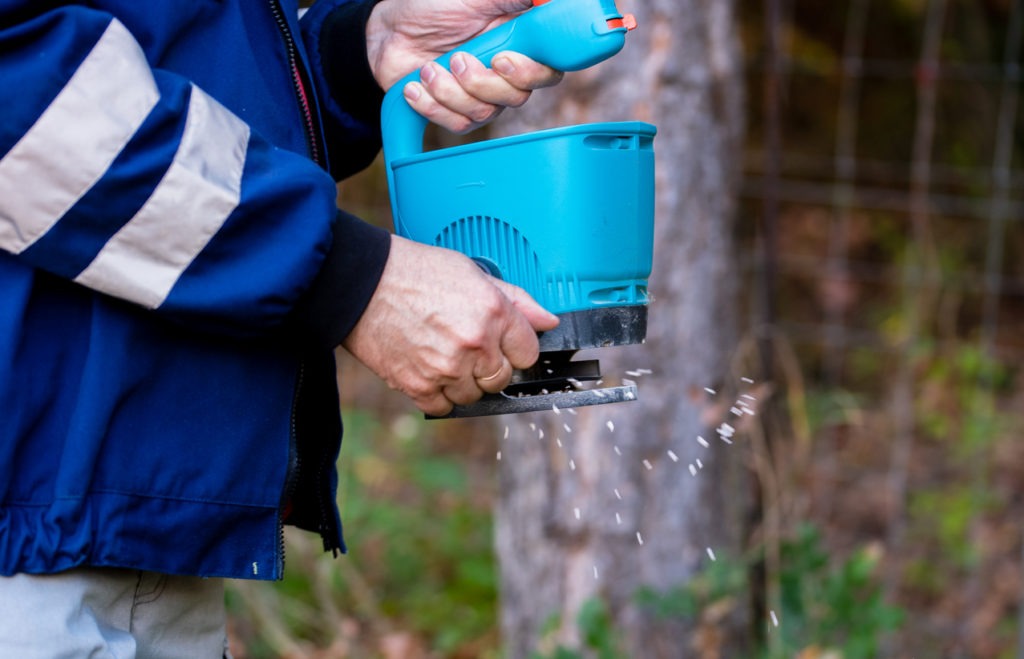How to Reseed Your Lawn
Lawns with dense and healthy grass coverage contribute significantly to your garden’s overall aesthetics. They ensure that the ground is ideal for playing, having picnics, and enjoying a number of activities. When your grass starts to look a bit sparse, it can reduce the area’s beauty.
There are many reasons why your lawn may be looking sparse. Your grass species may not be well-suited to the area, and there may be improper irrigation. Additionally, your mowing practices could also damage the overall look of your lawn.
If more than 20 to 40% of your lawn has started to look bare, you should consider reseeding your lawn to bring it back to its original glory.
Prepare
The first step to reseeding your lawn is to prepare the area. You should remove as many weeds from the property as you can. If you have isolated weeds growing, you should physically pull them out. If they have an extensive root system and are difficult to control, spray them with a non-selective herbicide.
Younger weeds are much easier to control chemically. If there are active and healthy weeds, you should leave the herbicide on them for 10 to 14 days. You can start with the reseeding process only after the herbicide has done its magic.
It is also best to time the task. The best time for planting grass in northern regions is either late summer or early fall, as it is when they grow the fastest. You can also plant them during the springtime as the warm soil quickens the germination process. If you plant them in the fall, the cool air will stimulate growth. Additionally, the soil moisture remains constant during this time, which is hugely beneficial.
If you live in southern regions, you should reseed your lawn during late spring because warm-season grass grows the most rapidly during this time.
After you have removed the weeds, you should mow your lawn as short as possible. Remove the clippings so the new seed contacts the soil and can get plenty of sunlight and water. When mowing your lawn, set your mover at two inches or less. If you are in the south, set the blade as low as your mower will allow.
You should also rake the soil with a metal thatch rake because it helps remove thatch, debris, and clippings. Additionally, it also loosens and exposes the soil, making it ready to receive seeds.
Correct Any Existing Problem
Before starting the reseeding process, you must correct any previous issues with your soil. Take your time to dethatch the core and aerate your lawn if it is compacted. This step can significantly help air, moisture, and seed get into your soil. You can also add fertilizers.
To aerate your lawn, you can use a hand aerifier or a machine aerifier. To do so, remove the rows of solid ¼ to ½ inch in diameter and 4 inches deep. You should also leave 5 inches between them. Leave the extracted cores of soil in the surrounding area as they will readjust.
Select a Quality Grass Seed Product
The next step is to select a quality grass seed product. You should choose grass depending on your regional climate. Otherwise, you will have a lot of trouble maintaining efficient lawn care. Also, purchase the correct fertilizer and soil enhancer with your seeds.
Spread Your Seed
After you have prepared your lawn, the next step is to spread your seeds. You can do so using a lawn spreader. There are multiple kinds that you can use. Depending on the lawn’s size, you may need a drop or broadcast spreader. If you have a small lawn, a handheld spreader works better. You can also spread them by hand.
When spreading your seed, ensure that the air is calm, so the seeds are distributed evenly across the area.
Fertilize Overseeded Areas
Once the seeds are spread, you must provide them with enough nutrients and minerals to grow well. It would be best if you started with fertilizer that contains essential nutrients that grass needs, such as phosphorus, nitrogen, etc. Phosphorus supports the roots of the grass and enables them to grow vigorously. You can also use nitrogen, which aids grass seeds’ growth.
Some countries have banned using phosphorus in fertilizers due to environmental concerns. So, you should check these restrictions before using a fertilizer.
Before you broadcast fertilizer, you can also rake the area using a lawn rake. This allows the grass seeds to be covered with 1/16 to ⅛ inch of soil. Additionally, you can also spread a thin layer of peat moss or any other organic material mulch. This step is beneficial in the summer when the moisture levels may be low.
Keep Your Lawn Well-Watered
It is crucial that you keep your lawn well watered with a garden hose after you have reseeded it. Newly planted seeds need constant moisture to grow, which is why you aim to water them frequently and lightly.
Ideally, you should water them twice a day for the first four days. Afterward, aim to water them heavily every alternate day for five days.
After the initial 9 days, water them enough to prevent wilting. This watering pattern encourages the roots to grow deep and remain healthy.
Regular Maintenance
Once you have revived your lawn, it is vital that you keep it looking fresh. This can be done with regular and comprehensive maintenance. You should diligently water your grass, look up the best mowing practices, and indulge in proactive overseeding. Usually, a simple maintenance schedule is enough to keep your lawn looking lush.
To keep your lawn looking its best, you should not wait for your lawn to start looking sparse. Instead, you should proactively overseed your lawn. You should also ensure that you use premium fertilizers with all the nutrients and minerals to keep your grass healthy.
What Is a Seed Spreader?
A seed spreader is designed to evenly spread seeds, fertilizers, and even pesticides around your garden. Although this task can be done manually, a seed spreader ensures that you spread the seeds evenly and saves time and effort.
Different Kinds of Seed Spreaders
There are various different spreaders available on the market. Still, if you want the perfect one, you need to know about all the available types.
Broadcast Spreader
Broadcast spreaders are the most common kinds of spreaders. They are also called rotary spreaders and can cover a large area quickly. Due to this, these spreaders are the best choice if you own a large lawn that you need to reseed. They are also straightforward to use.
The mechanism is quite simple, as there is a hopper that stays at the top of the machine. There is also a horizontal spinning disk below it. The material that falls from the hopper is deposited onto the spinning disc. From here, using the fins on the disc, the material is spread out.
If you purchase a modern spreader, you can adjust the spread’s direction and even the distance. Due to such flexibility, broadcast spreaders are perfect for larger areas.
| Pros | Cons |
| It covers a large area in a short time. | Difficult to control the flow. |
| It is extremely easy to use and adjust. | You may need to clean up if the seeds are thrown in unnecessary areas. |
| Saves time and energy. | You need to move at a steady and even pace with them to increase accuracy. |
Drop Spreader
Drop spreaders are used by pushing or towing them along with you. They are designed to cover straight lines and leave behind little waste. They must be used carefully as the material drops down in equal width to the hopper. Due to this, stripping can occur if the area is not covered equally. Stripping is when you can see a distinctive pattern where you did not spread speed severely and missed or overlapped rows.
| Pros | Cons |
| They allow control and precise seed dropping. | The distribution is less, and you may need to go over areas. |
| If you are careful, you can avoid overlapping the seeds. | It is difficult to spread seeds over a large area. |
| They are ideal to use in small areas and near trees and other obstacles. | – |
Handheld Spreader
A handheld spreader is a crank-operated spreader that is excellent for spreading seeds in a small area. They are the most affordable and portable option. Unlike the others on the list, these are perfect for smaller areas.
| Pros | Cons |
| Can be used in a smalls rea | Can not use in large gardens |
| Easy to use and assemble | – |
| Cheap | – |
What To Consider When Buying a Seed Spreader
If you are in the market to purchase a seed spreader, you must consider a few factors. These allow you to decide precisely what you need and choose the best seed spreader for your needs.
Size of Your Lawn
The size of your lawn plays a significant role in the seed spreader you buy. Since there are three different kinds available, you need to see how big your property is. If you have a large and uniform lawn, a drop spreader will be the best kind for you because it will be able to spread the seeds evenly and precisely.
If you have a small garden, consider purchasing a handheld spreader because it can help you save money and effort. You can also do without a spreader and spread the seeds by hand.
Another option is purchasing a broadcast spreader, which allows you to cover large acres easily.
Your Budget
Your budget will play a massive role in which spreader you buy. If you are on a budget, you should go for a handheld spreader. Even though it may take you longer to spread the seeds, they are cost-effective.
As there are different price ranges for each kind of spreader, the more expensive ones are likely to be better, faster, and easier to use.
Durability
When you purchase a seed spreader, ensure that you choose one that is durable. To do so, focus on the materials used to build the spreader. The design, build, and material should be durable and long-lasting. The stronger your spreader is, the longer you can use them.
Tires of the Spreader
If you are purchasing broadcast spreaders, you should take into consideration the kind of tires it has. The tires should be flat so that they can get proper traction when it runs on the lawn. Additionally, the ground may only sometimes be balanced, which is why you should ensure that the tires are both sturdy and flat.
Another factor you should check is how good the tire’s grip is. spreaders should have the best traction to prevent them from slipping and staying on track.
FAQs
1. Is a spreader necessary?
A spreader allows you to spread seeds in a much more effective manner. If you sprinkle seeds with your hands, you will have little success. It is necessary that you first prepare the lawn and take appropriate steps before you start spreading seeds.
2. What is the best month to reseed your lawn?
The best month to reseed your lawn is early fall. During this time, the daytime temperature is warm, which helps encourage the seed to grow. The nights are also cooler, giving the seed ample break from the heat.
3. Should I water immediately after spreading the seeds?
Yes. Watering your grass adequately is extremely important. You should ensure that your seeds get plenty of water and air that allows them to grow correctly. Even after the redeesing process, you should upkeep the maintenance of your lawn and ensure it always has adequate water.
Conclusion
If your lawn has started looking sparse, one of the best ways to help it look lush and green again is to reseed it. The process allows you to grow new grass blades that will fill in gaps. The reseeding process is lengthy but easy. If you do it right using the correct tools, you will be able to revive your lawn and give it a new life.




